Dog Training for Rescue Dogs: Pros and Cons

Adopting a rehomed dogis a noble thing. Giving a dog a second chance can be rewarding for pet and owner. If your new furry companion is a match for your needs, your personality, and your lifestyle, you both win.
When a new pet-owner relationship starts, getting to know each other is the way to go. Take the time to figure out what your new dog likes, dislikes, and habits, as well as which things you can live with and which you can’t.
The 3-3-3 Rule for Dogs: What to Expect During Adaptation Phase
An important rule to remember when rescuing dogs is the 3-3-3 rule. This rule refers to the fact that, for the first 3 days, your new rescue friend will be adjusting, feeling overwhelmed, and likely not acting themselves. The best thing to do here is to keep the environment calm and routine; training doesn’t have to start when they enter the door.
During the first 3 weeks, you’ll notice your dog from a shelter starting to settle in and learn your routine, and you may also see them begin to test some boundaries.
By 3 months, your rescue dog will feel truly settled into the new home.
This might seem like a long time, but moving from a shelter to a new home or one home to another is a massive adjustment for a rescue dog. During this period, most people notice the more serious behavioral problems, and when those pop up, it’s crucial to reach out to a specialist if you can’t deal with them.
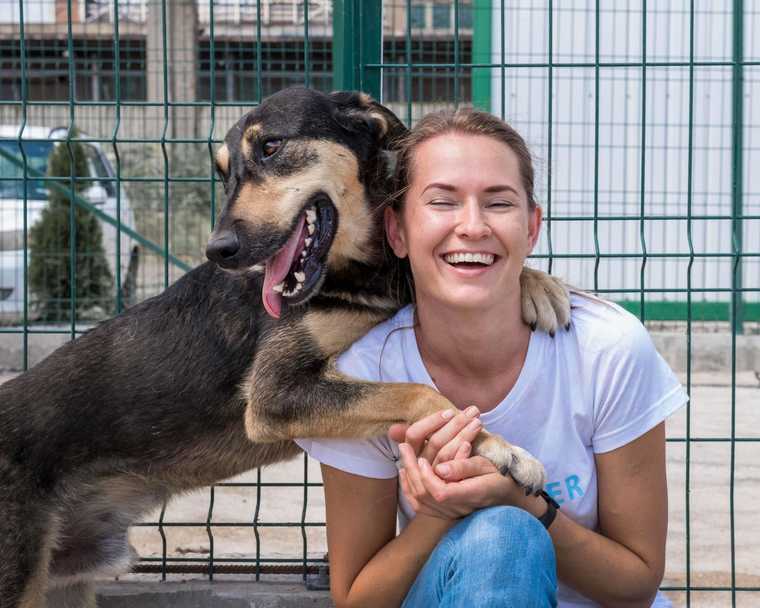
Get Ready to Train a Rescue Dog
You should start training before your new dog gets home. How's that possible?
In most responsible shelters, you'll have the opportunity to meet several dogs before making the big decision. Take them out, interact with them, and get to know them. Plan a few field trips, and I’d also strongly suggest hiring a behavior consultant or shelter trainer to get their input regarding the dog’s behavior, general character, and reactions to everyday stimuli, such as other dogs and people.
If they could get that information, some shelters/rescue groups have records of their dogs’ backgrounds (history). Many dogs have come from unfortunate situations like hoarding, abuse, or neglect, so knowing at least a bit of their history would be a good start. Unfortunately, some previous owners lie to get rid of their dogs through a shelter, so the background information may be inaccurate.
Don’t listen solely to your heart; remember you have to live with your new friend for the next 10-12 years, on average.
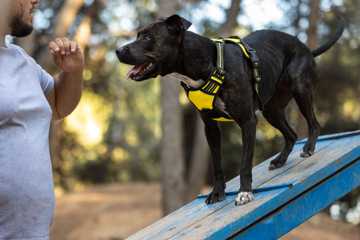
When dogs show behavioral problems, owners should be guided on how to help them through specific exercises. Most success stories involve vet behaviorists, consultants, or trainers, as each case differs.
It works like when a person has a therapist/counselor who advises “minute by minute” therapy as things are dynamic and can change, just as owners need to change their actions as their dog’s behavior changes.
Owners don’t usually have a toolbox full of resources, so professional help can make a difference. Remember that Google can only tell you things in a general way, and your situation is unique to you and your new dog.
When to Start Training a Rescue Dog?
We suggest starting the training process with a rehomed dog immediately. Depending on the dog’s personality and background, you may benefit from having an extra day or two to allow your new dog to settle. However, we don’t recommend postponing it for too long, as learning basic routines and reinforcing boundaries will benefit all members of your family,
Training an adopted dog will largely depend on a dog’s history. Many owners have to start with basic obedience commands. Starting with simple basic commands such as sit, stay, off, and come can considerably impact your daily interactions and minimize unwanted behaviors. Use positive reinforcement techniques only and remain patient with your dog to support them in their learning.
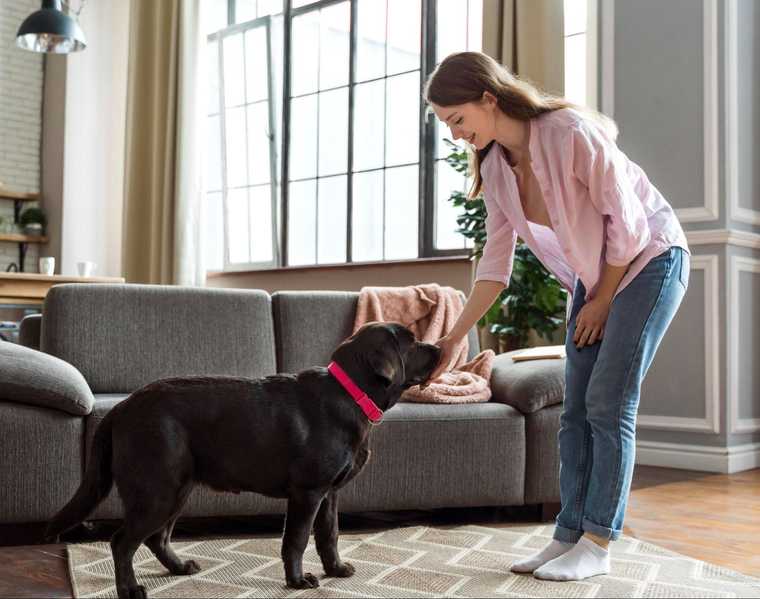
How Long Does It Take to Train a Rescue Dog?
The amount of time you should dedicate to rescue dog training depends on several factors:
- The dog’s age and background in training
- The presence of behavioral problems
- Your level of expertise in dog training
- How adapted the dog is to your home environment
Because dog training for rescue dogs is so complex, we can’t provide you with the exact time needed to train an adopted dog. In some cases, you can see progress in command learning within the early training days. Some dogs need more time to warm up.
If you feel stuck in the process of shelter dog training or your dog’s behavioral issues are severe, don’t hesitate to hire a professional trainer. Though sometimes pricy, professional assistance is money well spent. Proper obedience training is vital for building harmonious relationships with your furry friend.
Essential Tips for Training a Rescue Dog
Different plans will be needed for each stage of life, and those stages go fast, so we need to keep up with the changes and adjust to them as needed. Thus, puppies grow and change quickly, so teaching them how to learn and creating a solid foundation will strengthen their mental and physical fitness.
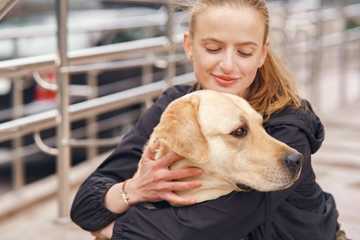
Older dogs are more stable personality-wise. However, they may come with a history of deep-rooted behavioral problems that can influence the success of the training. More patience or an expert approach might be suitable for dealing with a grown-up dog.
To achieve the best results in shelter dog training:
- Choose age-appropriate training techniques
Puppies are clean slates, a blank page where we can write down all new experiences (controlled preferably), make many training choices, and develop social guidelines for better everyday interactions. Puppies offer a world of possibilities and will generally grow parallel to your efforts and dedication, as with everything else: you reap what you sow.
- Consider the dog’s genetic makeup
It’s important to note that genetics play a huge role in behavior and will dictate up to 50% of our adult dog’s personality! We must learn about our dog’s genetic makeup and consider this when training our puppies. For example, a gun dog breed (spaniels, labs, etc.) will be far more prone to behavioral problems such as stealing items and resource guarding.
- Create a dog training plan
Knowing this is key in creating a training plan that mitigates the chances of these behaviors surfacing and causing problems later. Appeasing their natural genetic instincts (for example, teaching gun dog breeds a proper retrieve) is crucial to training a puppy effectively. A good breeder or trainer can help you understand your puppy’s needs, so when starting your training sessions, reach out to them and ask what areas they think you should focus on.
- Work on the dog’s traumatic background
Many shelter dogs already carry baggage that could affect their current behavior in more ways than one.

Poor socialization or lack of it, negligence (intentional or not), physical and psychological abuse, and bad experiences during crucial developmental phases may result in behavioral challenges.
- Be mindful of the dog’s personality
Assess their personality, character, temperament, and the behavioral problems they’re likely to develop. Some owners even opt for a DNA test to help understand some common behaviors, personality traits, or tendencies typical for a particular breed, group of breeds, or specific mixes.
Other practical considerations for newly adopted dogs
To ensure you create a comprehensive plan that’ll cover all your dog’s needs, consider the factors mentioned below:
- Medical and nutritional care.
- Exercise (walks, swimming, treadmill, dog sports like agility, herding, treibball, etc.).
- Stimulation (visiting new environments, creating new experiences).
- Playtime (fetch games, tug-of-war, interactive training).
- Bonding/interaction personal time (grooming/brushing, petting while watching TV).
- Social guidelines: let the dog know their role in your house (walking through doors, hand feeding, respecting furniture, personal space, learning to earn and to defer).
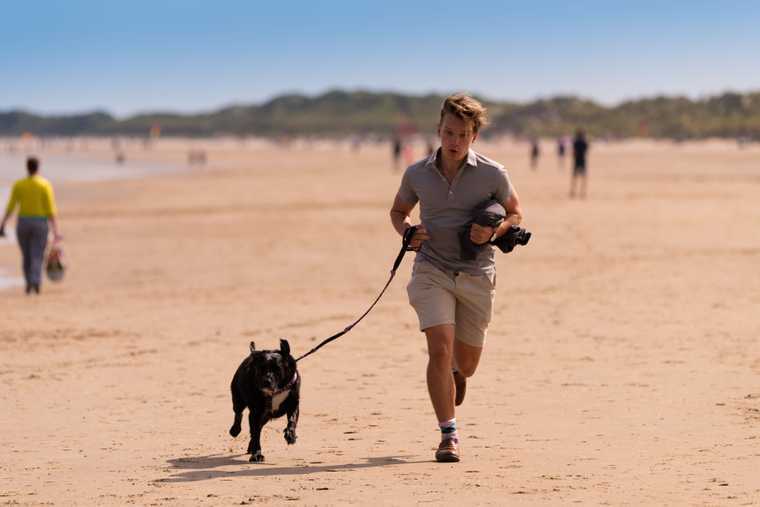
How to Train a Shelter Dog: Rescue Dog Behavior Problems
Many behaviors (this doesn’t pretend to list all possible problems) should be addressed, and you won’t be able to just live with them, as odds are they’ll only get worse. If you see yourself in the following cases, we’d strongly suggest consulting a behavior specialist for guidance. Don’t try to solve your problem through social media or watching random videos online.
Separation anxiety
This is the most frequent issue that affects rescue dogs: hyper attachment with one or more members of the family and fear of being alone and/or being confined are the most common manifestations of this condition. You may notice this fear through your dog displaying intense vocalizing, peeing/pooping where they shouldn’t, intense salivation, and destructive chewing to the point of hurting themselves. A behavior modification plan and medication may be needed alongside each other if the situation is extreme.
Anxiety (situational or generalized)
Often mistaken as fearfulness, anxiety is an emotional condition characterized by anticipation.

Fear, age, and separation/confining/isolation are the most common factors that could elicit behaviors like aggression, soiling inappropriately, drooling, panting, excessive barking, pacing, restlessness, compulsive/repetitive behaviors, and destructive behaviors.
Barrier frustration
Lunging, barking at the stimuli, typically toward other dogs. Hyper reaction when the dog can’t get from point A to point B (point B being another dog) because they’re physically constrained or separated from the stimuli. This situation creates frustration, which can escalate to aggression, particularly when dogs have reached social maturity (18-36 months old, depending on the breed).
This is a prevalent problem caused during puppyhood when puppies don’t get the necessary socialization and interactions.
Aggression
This could be interspecific (toward other dogs) or intraspecific (toward humans and/or other animals), and it could be anxiety-induced or anxiety-inhibited. Even though there are multiple aggression classifications (territorial, defensive, maternal, play escalate, resource-guarding, pain-induced, etc.), we’ll stick with a more straightforward definition that covers all of them.
In this particular scenario, it’s a must to have professional guidance, as your dog could hurt someone. With the right help, there are many things that we can do to help our dog besides the usual ways (use of a muzzle, restrictive head collars, use of a crate, physical barriers at a house, etc.).
Every dog in this situation is different; however, the most important thing is to keep everyone safe. Sometimes, the right amount of stimulation, exercise, environmental enrichment, and, eventually, practicing a dog sport can improve aggressive behaviors.
Compulsive behaviors
Your dog might have a genetic predisposition toward compulsive behaviors. If you suspect this is the case, you might need to check with a vet to see if there are any underlying medical problems.
- Flank sucking, air snapping, chasing unseen objects, acral lick granuloma, tail chasing, or spinning.
- Pacing, circling, incessant or rhythmic barking.
- Licking objects or owners, freezing and staring, polydipsia, tonguing or licking the air, and some forms of self-mutilation.
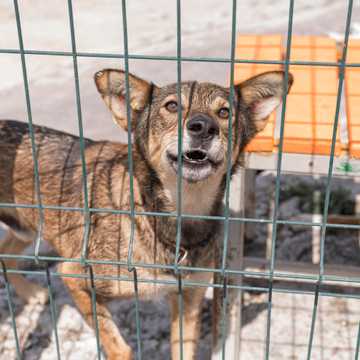
There are a lot of specialists you can use to help you in this case; for example, a veterinary behaviorist will consult and offer a diagnosis of the problem. Sometimes, they’ll recommend establishing a psychoactive medication plan together with a behavior modification plan. The behavior consultant will implement this plan, and the trainer may also bring other things like exposure and repetition.
However, there will always be a need for some form of control to prevent accidents. Aggression doesn’t have a cure as it’s a genetic trait, but it’s manageable to a significant extent, as long as there’s no aggression directed toward the new owner.
Common Mistakes When Training Rescue Dogs
Training any dog might be challenging. Training a shelter dog brings another layer of difficulties, so it’s natural for new owners to make mistakes while trying to introduce the dog to new rules and commands. We’ve collected some common mistakes dog parents make when training a rescue dog.
1. Being too strict about the training
Rescue dogs, like any other canines, benefit from systematic and consistent training sessions.

However, they may need more time to adjust or grasp the concept of the commands. Treat them with patience and encourage a positive attitude toward training through treats, praise, and rewards.
2. Introducing your dog to other people/pets too soon
Poor socialization skills are a common problem among shelter dogs. That’s why you should be careful introducing your dog to other pets you have. All family members, including young kids, should learn the basic rules of safe interaction with the new dog.
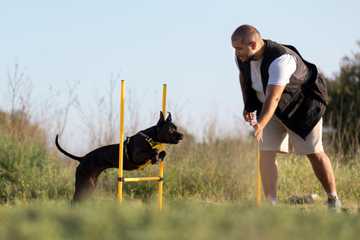
3. Being too relaxed about the training
Rehomed dogs need your empathy and understanding, but it shouldn’t result in the absence of obedience training. Teaching a dog new commands is not only about your comfort but also ensures the dog’s safety and provides them with a tool to communicate with you.
4. Allowing the dog to roam freely around your property
Until the dog adjusts to your pace and you start training them, limit the area where they sleep, eat, and play. This will help avoid overstimulating the dog and contribute to the safety of other family members and pets.
Wrap Up
Getting all possible information regarding your dog’s health, keeping up with their daily needs, training them, and giving them the best possible life will be amazingly rewarding for both of you. Put the time in, have patience, get help when needed, and find out everything you can; your rescue dog will always love you.
Frequently Asked Questions

Passionate team dedicated to help pet owners raise safe and obedient dogs, fostering meaningful connections with their furry companions.

Certified dog trainer, exclusive positive reinforcement methods & tackling aggression problems.